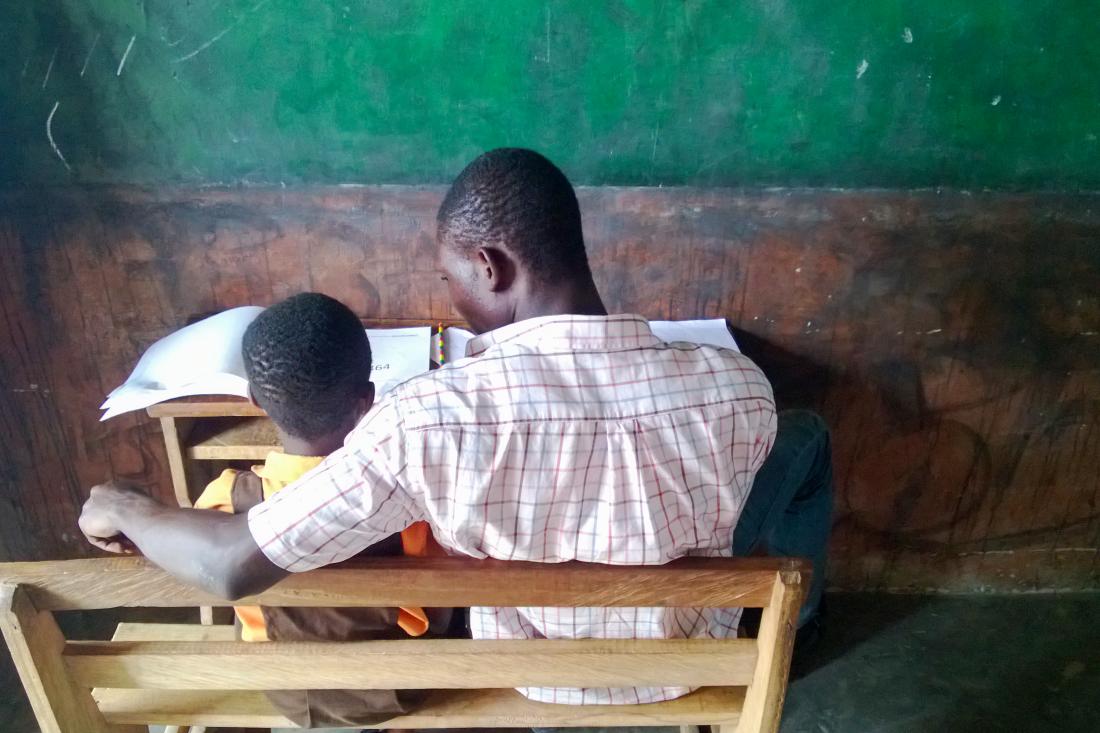The Importance of Management Support for Teacher-Led Targeted Instruction in Ghana
- Students
- Teachers
- Student learning
- Tailored instruction
Ghana, like many countries in sub-Saharan Africa, has greatly expanded access to primary school in the last two decades, but very few children meet academic standards for their grade. A recent evaluation found that the Teacher Community Assistant Initiative (TCAI), a targeted instruction program in Ghana, improved children’s basic skills in numeracy and literacy, but implementation was uneven and compliance with the program was low among classroom teachers. Researchers partnered with Ghana Education Services (GES), The National Teaching Council (NTC), The National Council for Curriculum and Assessment (NaCCA), The National Inspectorate Board (NIB), and UNICEF to evaluate whether additional managerial support from head teachers and circuit supervisors could increase the likelihood that teachers implement targeted instruction in their classrooms. The results will help inform Ghana’s Ministry of Education on how teacher-led targeted instruction can be replicated at scale in Ghana.
الموضوع الأساسي
Many developing countries have significantly improved access to primary school education, spurred by initiatives such as the United Nations Millennium Development Goals (MDGs), which called for achieving universal primary education by 2015. Enrolling more children has strained education systems—primary schools may be failing to equip a large portion of students with even basic reading, writing, and math skills. The Sustainable Development Goals (SDGs), which build on the success of the MDGs, look beyond access to education quality. One SDG is to ensure that all girls and boys complete free, equitable and quality primary and secondary education leading to relevant and effective learning outcomes by 2030, measured both by rates of attendance, as well as by achievement levels in math and reading1.
Targeted instruction is a pedagogical approach that tailors instruction at the level of the student’s current knowledge instead of the level of the official curriculum. Evidence from Ghana found that targeted instruction had positive effects on learning even though take-up of the program was low among teachers. This study evaluated the effect of increased management engagement on program compliance and contributed evidence on scalable ways to implement targeted instruction programs.
سياق التقييم
Ghana has high primary school enrollment rates, yet not all students are learning. According to a 2012 report from UNICEF’s Global Initiative on Out-of-School Children, 89 percent of Ghanaian children were enrolled in primary school. However, only 8 percent met academic standards for their grade2. Based on data collected in 2016, fewer than half of 2nd grade pupils could read a single word in English or an official Ghanaian language of instruction. The gap also persists into higher grade levels. In grades four and six, a quarter of pupils were proficient in math, and only 37 percent in English3.
An evaluation of the Teacher Community Assistant Initiative (TCAI) targeted instruction intervention showed that teacher-led targeted instruction improved pupils’ basic skills in numeracy and literacy despite teachers’ low compliance with the program.
In Ghana, government schools in each district were grouped into circuits of 8-10 schools overseen by a circuit supervisor (CS). The circuit supervisor’s acts as a liaison between the school and district education office. Over time, schools have come to see the CS as an enforcer not as a mentor or supporter.

معلومات تفصيلية عن التدخل
Researchers partnered with IPA, GES, NTC, NaCCA, NIB, and UNICEF to conduct a randomized evaluation to test whether stronger management support could increase the compliance of teacher-led targeted instruction. The management support program was called Strengthening Teacher Accountability to Reach all Students, or STARS.
The STARS program aimed to improve student achievement by enhancing head teachers’ and circuit supervisors’ roles in monitoring, providing feedback, motivating, and supporting teachers. The program took place in 20 districts, comprised of 140 study circuits. Within those circuits, 210 government schools were randomly assigned to one of three groups:
• Training in targeted instruction: School teachers in grades four through six, head teachers, and circuit supervisors were trained in how to provide instruction targeted at pupil’s actual learning levels. For eight weeks of each 12-week term, teachers in Grades 4-6 divided their students by learning levels, rather than grade level, for eight thirty-minute sessions per week, 40 percent of a pupil’s English and math curriculum. The training was directly focused on the classroom teachers and head teachers; however, circuit supervisors often attended district level training. (70 schools)
• Training in targeted instruction plus management training: In addition to the first intervention, head teachers and circuit supervisors received training on how to best mentor and support teachers. Training participants received a resource manual that outlined how to perform specific tasks to support teachers and contained teacher observation forms and examples of successful mentoring strategies. (70 schools)
• Comparison group: No program. Business operated as usual in these schools. (70 schools)
The program ran for the entire 2018-2019 school year. An initial survey was conducted in June 2018, and a follow-up survey was conducted in July 2019. In addition, unannounced classroom observations occurred throughout the evaluation period to assess multiple dimensions of teacher effectiveness.
النتائج والدروس المستفادة بشأن السياسات
Study ongoing; results forthcoming.
